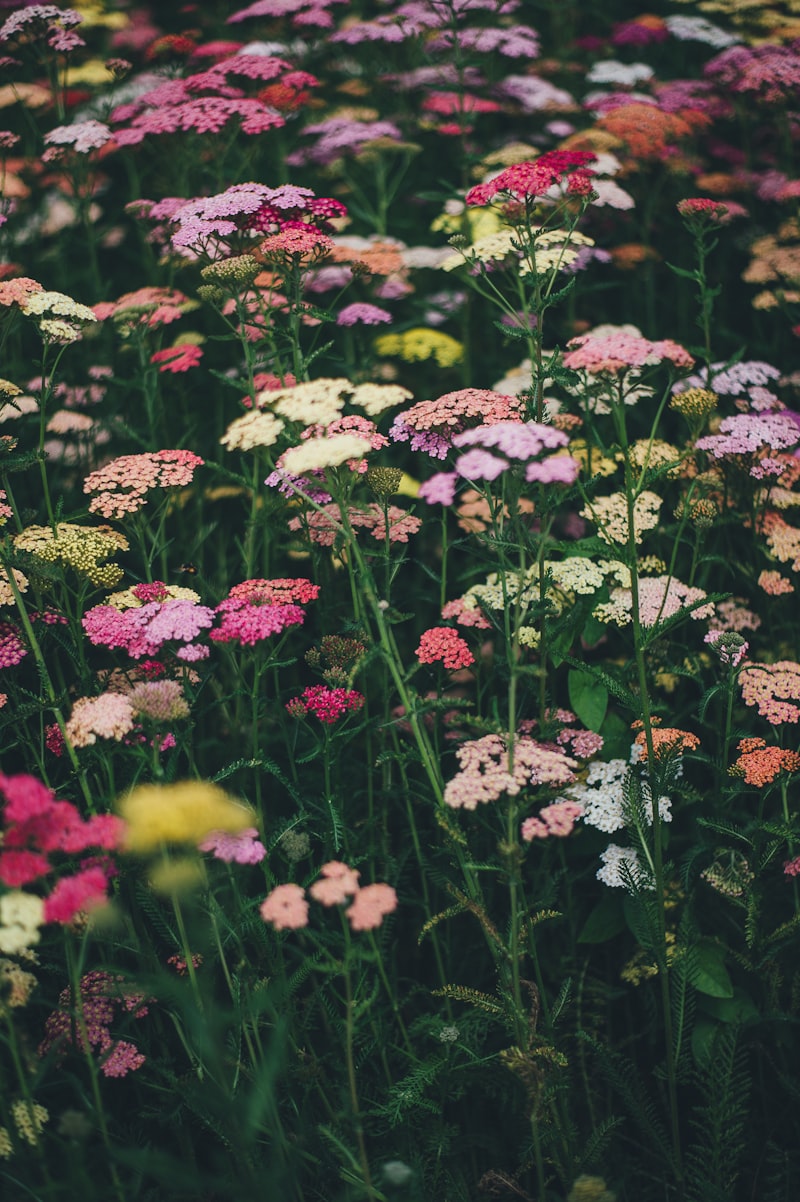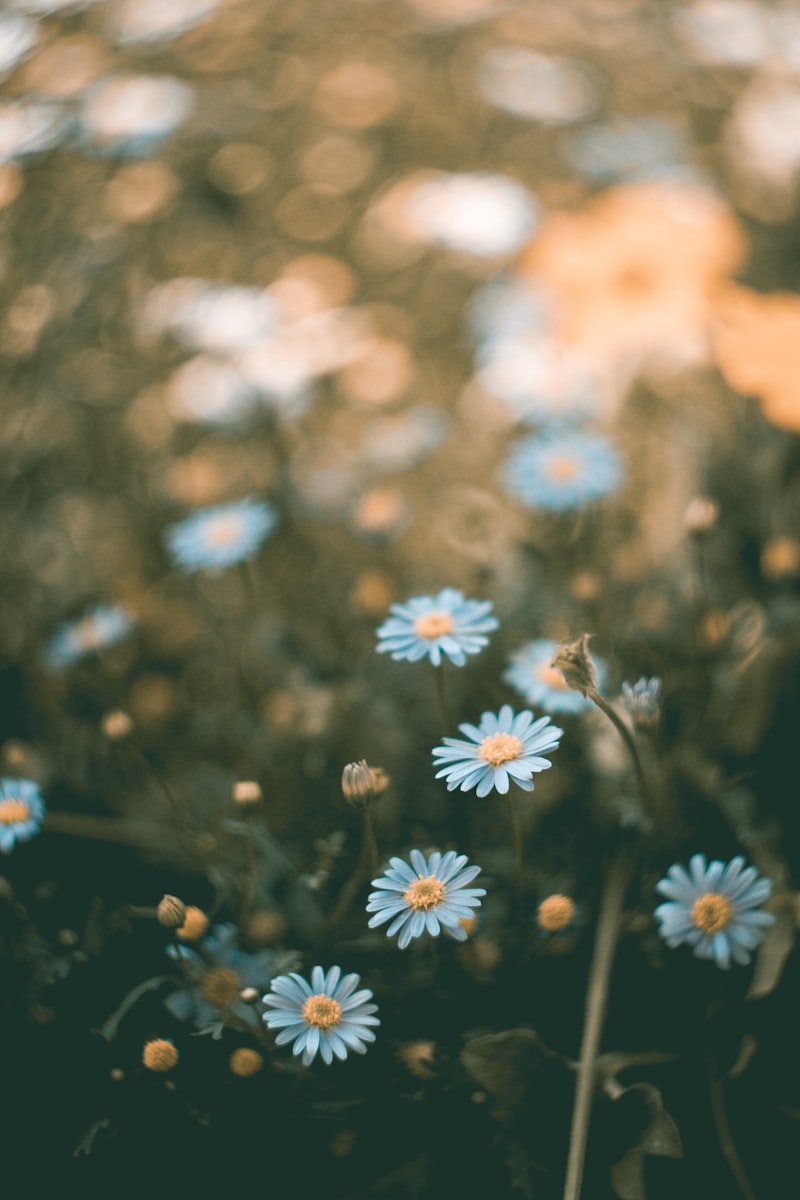
To begin identifying wildflowers, start with observation. Notice the flower’s color, size, and shape. Are the petals broad or narrow? Is the bloom solitary or clustered? These details can often lead you to an initial classification. Take note of the leaves too, as they can vary significantly between species and offer clues to identification.
Next, consider the habitat. Wildflowers have specific preferences for where they grow. Some thrive in sunny meadows, while others prefer shaded woodlands or moist marshlands. By understanding the environment they inhabit, you can narrow down the possibilities and make a more accurate identification.
Field guides and smartphone apps are invaluable tools for amateur botanists. These resources provide descriptions, photos, and even identification keys that help match your observations to known species. Apps like iNaturalist or PlantSnap use image recognition technology to identify flowers from photos you take, making the process both educational and interactive.
Understanding the importance of wildflowers goes beyond their visual appeal. They are essential for biodiversity, providing food and habitat for insects, birds, and other wildlife. Many wildflowers also play critical roles in pollination, ensuring the reproduction of countless plant species, including those of agricultural importance.
Unveiling Nature’s Palette: A Beginner’s Guide to Identifying Wildflowers
Welcome to the colorful world of wildflowers, where nature showcases its vibrant palette in every petal and leaf. For beginners, identifying wildflowers can be a delightful journey of discovery. Imagine strolling through a meadow adorned with a tapestry of colors, each flower telling its unique story.
When starting out, observe the habitat around you. Wildflowers have preferences – some thrive in sunny meadows, while others prefer shady woodlands or wetlands. Understanding their preferred environment can often lead you right to them.

Next, pay attention to the flower’s characteristics. Notice the shape and color of the petals. Are they symmetrical or irregular? Is the color vivid or subtle? These details provide clues to the flower’s identity. For instance, the delicate purple petals of a lupine or the fiery orange of a Indian paintbrush are distinctive markers.
Another key identifier is the leaves. Wildflowers come in a variety of shapes and sizes, and their leaves can be just as diverse. Some are broad and serrated, while others are slender and needle-like. Learning to recognize leaf patterns and textures can narrow down your search significantly.
Seasonality is also crucial. Many wildflowers bloom during specific times of the year. Spring may bring carpets of bluebells and daisies, while summer introduces sunflowers and coneflowers. By noting when flowers bloom, you can anticipate their appearance and plan your outings accordingly.
Finally, don’t hesitate to use resources like field guides or smartphone apps. These tools can provide detailed descriptions, photos, and even identification tips based on location. They are invaluable companions for both beginners and seasoned enthusiasts alike.
In essence, identifying wildflowers is like unlocking a natural treasure chest. Each bloom holds a story of adaptation and beauty, waiting for curious eyes to uncover. So, grab your walking shoes and embark on this enchanting journey into nature’s colorful realm.
This article aims to capture the wonder and practical tips for beginners eager to explore and identify wildflowers, blending informative guidance with a conversational tone to engage the reader effectively.
Beyond the Bloom: Understanding the Ecological Significance of Wildflowers
Have you ever stopped to admire the delicate beauty of wildflowers that paint our landscapes in vibrant hues? Beyond their aesthetic appeal, wildflowers play a crucial role in our ecosystems, offering a wealth of benefits that often go unnoticed. These resilient plants have adapted over centuries, thriving in diverse habitats from meadows to mountainsides.
Wildflowers are more than just pretty petals; they serve as vital pollinators for bees, butterflies, and other insects essential for agricultural productivity. Their nectar and pollen sustain countless species, forming the backbone of food chains that support biodiversity. In turn, this diversity strengthens ecosystem resilience against environmental stressors and climate change.
Their roots anchor soil, preventing erosion and improving soil structure. This helps retain moisture and nutrients, benefiting neighboring plants and fostering healthy soil ecosystems. Moreover, their presence supports natural pest control by attracting predatory insects that keep harmful pests in check, reducing the need for chemical interventions.
Beyond their ecological roles, wildflowers offer cultural and recreational value, enriching our lives with their seasonal displays and providing habitats for wildlife photography and nature enthusiasts. Their ability to thrive in harsh conditions also symbolizes resilience and adaptation, inspiring admiration and wonder.
Next time you spot a patch of wildflowers, take a moment to appreciate their ecological significance. They are not just fleeting blooms but integral components of a balanced ecosystem that sustain life in myriad ways. Understanding and preserving these natural treasures is essential for safeguarding our environment and ensuring a sustainable future.
This article aims to capture the essence of wildflowers beyond their visual appeal, highlighting their ecological importance in a conversational and engaging tone.
Mastering the Art of Wildflower Identification: Tips and Techniques
Ever wandered through a meadow and wondered about the names of the wildflowers around you? Mastering the art of wildflower identification can turn your nature walks into fascinating journeys of discovery. Whether you’re a seasoned botanist or a curious nature enthusiast, learning to identify wildflowers brings a deeper understanding of the natural world right at your fingertips.
One of the first tips in mastering wildflower identification is to observe closely. Take the time to notice the shape of the petals, the arrangement of leaves, and the overall structure of the flower. Sometimes, it’s the smallest details that hold the key to identifying a particular species.
Seasonality is another crucial factor. Wildflowers bloom at specific times of the year, and knowing their flowering season can narrow down the possibilities. For instance, certain flowers may only bloom in the spring, while others might be seen throughout the summer or even into early fall.
Utilizing a field guide or a reliable identification app can be immensely helpful. These resources often provide detailed descriptions, photographs, and even distribution maps of various wildflower species. They act as your companions in the field, helping to confirm your observations and guiding you towards accurate identifications.
Engaging multiple senses can also enhance your identification skills. Take a moment to touch and feel the texture of the petals, smell the fragrance if any, and observe how the flower interacts with its surroundings. This holistic approach not only aids in identification but also deepens your connection to nature.
Sometimes, wildflowers can be elusive, especially when they resemble closely related species. In such cases, don’t hesitate to consult local botanical experts or online forums where fellow enthusiasts share their knowledge and experiences. Learning from others and discussing your finds can be both educational and enriching.
Mastering the art of wildflower identification is a rewarding journey that unfolds gradually over time. It requires patience, keen observation, and a genuine appreciation for the beauty of nature. So, next time you venture into the wild, take a moment to stop and admire the wildflowers around you—they have stories to tell and secrets to reveal about the natural world.
The Hidden Gems of Our Ecosystem: Why Wildflowers Matter
Imagine walking through a field dotted with a kaleidoscope of colors – golden yellows, fiery oranges, and soothing purples dancing in the breeze. Each wildflower, from the humble daisy to the elegant lupine, serves as a vital component of our natural world. They aren’t just there to please our eyes; they are essential players in the intricate web of life.
Wildflowers are not needy divas like some cultivated flowers; they thrive without much human intervention. Their hardiness makes them resilient in various climates and soils, making them pioneers in ecosystems recovering from disturbances like fires or landslides. They hold the soil together, preventing erosion, and provide a safe haven for other plants to take root.
But it’s not just about their physical presence. Wildflowers are like bustling cities for insects. Bees buzz from flower to flower, gathering nectar and pollen that sustain entire colonies. Butterflies flutter gracefully, carrying out the essential task of pollination as they sip on sweet nectar. And let’s not forget about the myriad of other tiny creatures – beetles, ants, and flies – that call these blooms home or rely on them for survival.
Beyond their ecological roles, wildflowers have a cultural significance too. They inspire poets and artists, symbolizing freedom, resilience, and the untamed beauty of nature. In many cultures, they hold medicinal properties, used for centuries to heal ailments and soothe spirits.
In essence, wildflowers are the unsung heroes of our ecosystems. They contribute to biodiversity, support wildlife, and enhance our well-being in ways both tangible and intangible. So, the next time you spot a patch of wildflowers, take a moment to appreciate these hidden gems and their profound impact on our planet.
Frequently Asked Questions
What ecological roles do wildflowers play and why are they important for biodiversity
Discover the crucial ecological roles of wildflowers and their significance for biodiversity. Learn why these native plants support pollinators, provide habitat for wildlife, and contribute to ecosystem resilience.
How can I differentiate between similar-looking wildflower species
Learn how to distinguish between similar-looking wildflower species with our concise guide. Discover key visual cues and characteristics that set each species apart, helping you confidently identify them in the wild.
Why is it important to identify wildflowers in their natural habitats
Understanding wildflowers in their natural habitats is crucial for biodiversity conservation and ecological balance. Identifying them helps in preserving native plant species, understanding their roles in local ecosystems, and promoting environmental awareness.
What are the key features to look for when identifying wildflowers
Discover the essential characteristics to recognize wildflowers with confidence. Learn about key features such as petal arrangement, leaf shape, color patterns, and growth habits to identify wildflowers accurately in their natural habitats.
Where are the best places to find and observe wildflowers
Discover the best locations for finding and observing wildflowers in their natural habitats. Explore diverse landscapes from meadows to national parks known for their vibrant floral displays. Learn about ideal seasons and regions worldwide that offer prime opportunities for experiencing the beauty of wildflowers.



